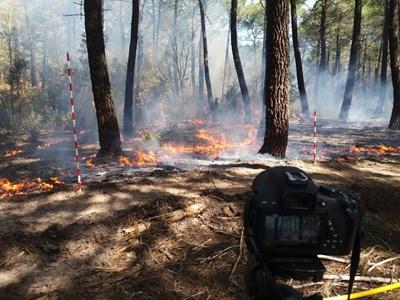
Objective:
Along with the latest advances in the resin sector for improving resin production, such as forest tree breeding, innovative harvesting technology, etc, prescribed fire is also analysed as a tool for increasing resin yield in Pinus pinaster stands. The results of this study are summarized below.
Context:
The defence system of pines involves different mechanisms. Some of them occur naturally and others are induced by external stimuli. In the resin tapping process, the wound produced in the tree plus the application of the stimulant paste (sulphur-based paste) cause a stress situation that induces resin production. The resin yield varies according to stress levels. Previous studies have reported that prescribed fires may affect resin yield. It is also known that stands with lower densities produce more resin, so the reduction in competition caused by prescribed fires may increase resin yield. This study aims to determine whether prescribed fires have a positive effect on resin yield.
Contacts:
Aida Rodríguez-García, aida.rodriguez.garcia@upm.es
Javier Madrigal , incendio@inia.es
David González-Sancho , dgonza10@tragsa.es
Luis Gil , luis.gil@upm.es
Mercedes Guijarro , guijarro@inia.es
Carmen Hernando Lara, lara@inia.es
Further information:
Rodríguez-García, A., Madrigal, J., González-Sancho, D., Gil, L., Guijarro, M., & Hernando, C. (2018). Can prescribed burning improve resin yield in a tapped Pinus pinaster stand?. Industrial Crops and Products, 124, 91-98.